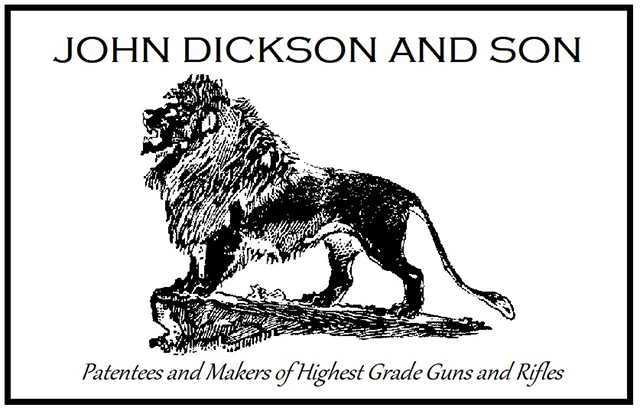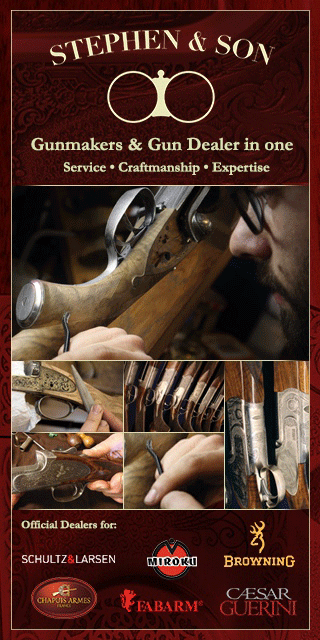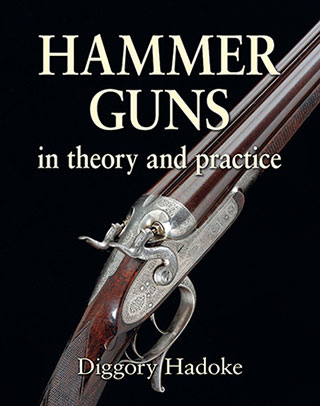It is not unusual for a boy to pick up a gun for the first time and, after a little preliminary instruction and practice in handling and mounting it, to start right off and shoot well; at least, at the simpler flying targets.
This early promise is seldom sustained: as soon as the boy realises how well he is doing he begins to think, and so begins to miss. Introspection in the act of shooting is, indeed, fatal to success, and for this reason I should be sorry to start any young shooter on the evil course of worrying unduly about the performance of his gun.

It has to be a very bad gun-cartridge combination that will not cope satisfactorily with shots at moderate range, and the cause of consistently bad performance under easy conditions must almost invariably be sought elsewhere. Still, there are situations in which the gun itself comes fairly under suspicion, and for this reason every shooter should know how to test his weapon.
In the course of the many conversations I had at the Game Fair with friends and strangers, the subject of testing guns for pattern came up twice, and in each case it emerged that the man concerned did not know the right way to perform such a test, and had thereby failed to learn the significant facts it might have taught him. If you are going to test a gun, it is essential to do it properly: otherwise you are not only wasting cartridges, but quite probably deluding yourself.
Shotguns are normally tested by firing them at a suitable target at a distance of 40 yds., and observing how many pellets they put into a 30-in. diameter circle, and with what degree of regularity. But this simple statement by no means contains all necessary guidance for the carrying out of a valid and useful test.
First, there is the question of a suitable target. The best is undoubtedly a sheet of plain iron, not less than 4 ft. square, and coated with a very thin coat of whitewash between shots. If a sheet of iron is not available, paper will serve, and old paper sacks, opened up and stuck together as necessary, will do quite well.
Then there comes the question of the 30-in. circle. This must not I repeat, not —be drawn on the target before the shot. I am prepared to be told, and told again, that a well-known writer, in a recent book, has described a contrary procedure; but it is not only wrong to draw the circle first, and contrary to the practice of gun and ammunition makers, but it may vitiate the test and conceal the very information it could most usefully yield, as I hope to show.
The correct procedure is to make an aiming mark in the middle of the target, and to aim carefully at this mark as with a rifle when taking the shot. The pattern is then examined, and the centre of the charge estimated by eye, ignoring the aiming mark, and the 30 -in. circle drawn about the centre so estimated. (I shall be dealing with the interpretation of the pattern later.)
Next comes the fact that it is necessary to fire at least six shots at six separate targets for each barrel. It seems almost impossible to avoid getting a poor round every ten or a dozen shots—I mean a round with a pellet count conspicuously below the average—and if one fires less than six shots, including such a round, the average result so obtained will not fairly represent the performance of the gun. If one fires only one shot, it is only too likely that that one shot will be the poor round!
it is necessary to fire at least six shots at six separate targets for each barrel.
The last point on procedure is that the distance of 40yds should be measured (and I mean measured not paced) using a tape measure or its equivalent, and should be taken from the target to the point on which the shooter stands, not to the muzzle of the gun.
The importance of measuring the range arises from the fact that a small error can have a disproportionate effect on the result.
Now we come to the study and interpretation of the patterns. Undoubtedly the most convenient thing to do, which I do myself whenever possible, is to use an iron plate, as described, and to photograph the pattern after drawing the 30-in. circle and making some conspicuous identifying mark in the top right-hand corner or other fixed position.
Such photographs, if enlarged to about 4 in. in diameter, are admirable for study and record. Otherwise the total pellets striking within the circle must be counted and noted down for each shot. Also the position of the charge centre must be noted, and each pattern studied and judged for uniformity and comparative freedom from empty patches before re-washing the plate.
If the patterns are paper ones, they should be identifiably marked, taken home, spread out on the floor, and the individual pellet holes marked with a dab of black ink or the like. I myself use a miniature cork stuck into a holder and a common ink pad. It may sound a bore to have to mark up half a dozen patterns in this way; but after you have done one, it will seem a rewarding task, because you will realize that you have never really seen the pattern before.
When they have all been done, they should be individually inspected, the pattern centre estimated by the eye, and the 30-in. circle drawn. The pellets within the circle may then be counted and noted down, as before; also the position of the charge centre in relation to the aiming mark.
You should then make a neat summary of the results, and since you may be glad to refer to this later, it should be carefully preserved.
The following table is an actual record, and apart from one poor round per barrel (bracketed) is very satisfactory indeed, so far as pellet count is concerned. The average figures of 69 and 48 per cent are quite close enough to the nominal figures for full choke and improved cylinder of 70 and 50 per cent respectively, and, with the exceptions noted, there is little individual variation from the average figure.
But we have so far taken no note of the quality of the patterns, as distinguished from the mere pellet count. Nor have we considered the implications of the fact that the gun shoots about 10” low with this load; a thing we should not have learned if we had drawn the 30-in. circle before shooting.
I may usefully repeat the nominal percentage patterns associated with the various borings:
They are:
Full Choke: 70%
Three-Quarter Choke 65%
Half Choke: 60%
Quarter Choke: 55%
Improved Cylinder: 50%
True Cylinder: 40%

Published by Vintage Guns Ltd on (modified )



